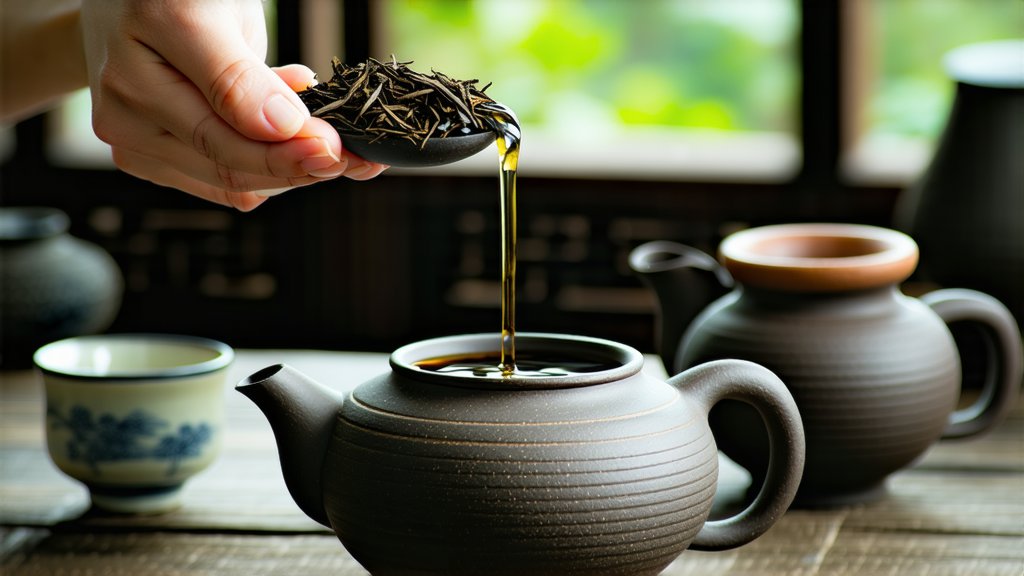
Pu-erh tea, a distinguished member of the dark tea family originating from the Yunnan province of China, holds a unique place in the vast universe of teas. Unlike other types of tea that are typically named after the region they come from or their processing method (like green, oolong, or black tea), Pu-erh is defined by its distinctive post-fermentation process, which imbues it with unparalleled depth and complexity. This article embarks on an exploration of this enigmatic tea, delving into its storied history, diverse varieties, intricate production process, and the art of its appreciation.
A Glimpse into History
The tale of Pu-erh tea traces back over a thousand years to the ancient caravan routes known as the Tea Horse Road, which connected Yunnan with Tibet. Initially, tea produced in Yunnan was transported to Tibet on horseback, where it served as a crucial commodity for trade and daily consumption. Over time, the long journey exposed the tea to various climatic conditions that facilitated its natural fermentation, leading to the development of what we now recognize as Pu-erh tea.
Varieties of Pu-erh
Pu-erh tea comes in two primary forms: raw (Sheng) and ripe (Shou). Each type offers distinct characteristics and aging potential:
-
Raw Pu-erh (Sheng): This variety undergoes minimal processing after being plucked from the Camellia sinensis plant. The leaves are sun-dried and then pressed into cakes or bricks without further fermentation. Raw Pu-erh is prized for its ability to age and evolve over decades, developing increasingly complex flavors and aromas reminiscent of earth, wood, and even floral notes.
-
Ripe Pu-erh (Shou): Unlike its raw counterpart, ripe Pu-erh undergoes a controlled fermentation process known as 'wet piling,' where compressed tea is left to ferment in a humid environment for several weeks. This accelerates the aging process, resulting in a mellower, darker tea with rich, earthy undertones and a smoother finish. Ripe Pu-erh is often enjoyed sooner after production but can also improve with proper storage.
The Art of Crafting Pu-erh
The production of Pu-erh tea is an art form that requires precision and patience. Here's a simplified overview of the process:
- Plucking: Tea leaves are handpicked during specific seasons to ensure optimal quality.
- Withering: Freshly picked leaves are spread out to dry naturally under the sun, reducing moisture content.
- Fixation: For raw Pu-erh, the leaves undergo a brief heating process to halt enzymatic activity, preserving their natural green color and freshness.
- Rolling and Shaping: Leaves are rolled and shaped, either into loose leaves or compressed forms like cakes or bricks.
- Fermentation (for Shou): In the case of ripe Pu-erh, the formed tea undergoes a microbial fermentation process in a controlled environment, promoting flavor maturation.
- Aging: Both Sheng and Shou Pu-erh benefit from aging, which enhances their complexity and depth. Proper storage conditions—cool, dry, and free from strong odors—are essential for this transformation.
The Art of Tasting Pu-erh
Appreciating Pu-erh tea goes beyond mere consumption; it is an experience that engages all senses. Here’s how to embark on a sensory journey with Pu-erh:
-
Preparation: Use a Yixing clay teapot or a Gaiwan, both traditional vessels that enhance the tea's flavor profile. Rinse the leaves briefly with hot water to awaken them.
-
Infusion: Steep the leaves in boiling water for about 30 seconds for the first infusion, gradually increasing steeping time for subsequent brews. Pu-erh can be infused multiple times, each revealing new layers of flavor.
-
Observation: Examine the tea liquor's color, which ranges from bright amber in young sheng to deep reddish-brown in aged pu-erh. Note any changes across infusions.
-
Aroma: Inhale deeply before sipping to detect subtle fragrances. Raw Pu-erh may offer hints of earthiness, while ripe Pu-erh exudes warm, woody aromas.
-
Taste: Sip slowly, allowing the tea to coat your palate. Pay attention to the initial taste, mid-mouth feel, and aftertaste. Look for complexity, balance, and lingering effects.
-
Feel: Notice the tea's texture and body in your mouth. A well-crafted Pu-erh should have a smooth, velvety mouthfeel.
In conclusion, Pu-erh tea is not just a beverage; it's a testament to China's rich cultural heritage and a symbol of the harmony between nature and human craftsmanship. Its intricate production methods, coupled with the transformative power of time, make it a fascinating subject for tea enthusiasts worldwide. Whether you're drawn to the evolving character of raw Pu-erh or the immediate comfort of ripe Pu-erh, exploring this ancient tea promises a rewarding adventure for your palate and soul.